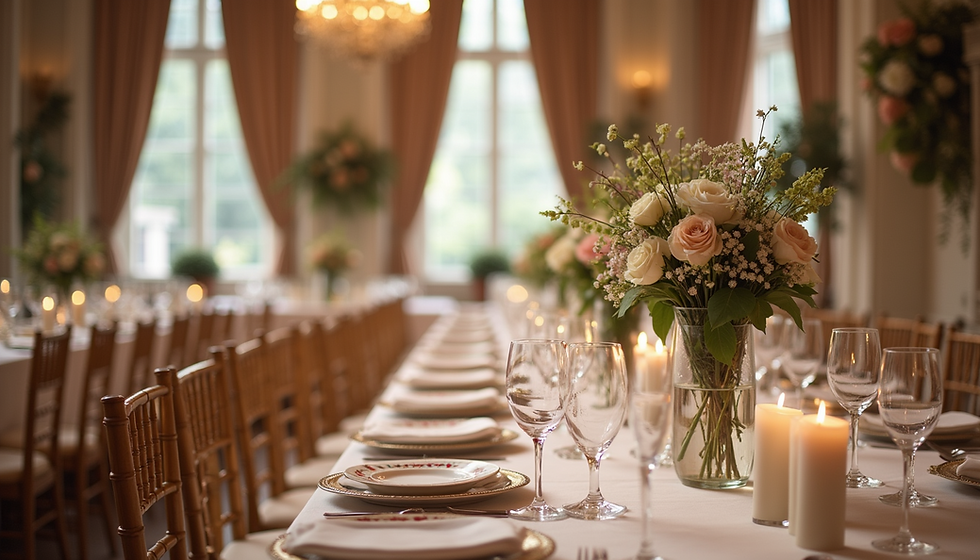Exploring the Intriguing History of Victorian Noble Women's Headdresses
- donaldfery
- Mar 13
- 3 min read
The Victorian era, a time of great social change and innovation, is often remembered for its opulent fashion, particularly among noble women. One of the most fascinating aspects of this time period is the variety of headdresses that adorned the heads of aristocratic ladies. These stunning accessories were not merely decorative; they were powerful symbols of status, wealth, and femininity.
In this post, we will delve into the world of Victorian headdresses, exploring their evolution, types, significance, and cultural impact.
The Evolution of Headdresses in the Victorian Era
The Victorian era lasted from 1837 to 1901, and during this time, fashion underwent significant transformations. Headdresses were crucial components of a noble woman’s attire, often reflecting her social status and personal style.
Initially, headdresses were simple constructs made of natural materials like ribbons and flowers. However, as the 19th century progressed, they grew into elaborate designs featuring feathers, lace, and even jewels. This transformation was driven by cultural shifts, such as increased wealth among the upper classes and the industrial revolution that made luxurious materials more accessible.
As the Victorian era unfolded, the headdress became an essential accessory, embodying the elegance and sophistication that defined noble women’s fashion.

Types of Popular Headdresses Among Noble Women
There were several popular styles of headdresses among Victorian noble women, each with its unique characteristics and cultural relevance.
Bonnets
Bonnets were perhaps the most iconic Victorian headdresses. Made from various fabrics like silk and straw, these hats were often decorated with ribbon or lace. Bonnets emphasized modesty while offering a touch of glamour, becoming synonymous with feminine grace.
Tiara
The tiara is a regal headdress that gained prominence during the Victorian era. Tiaras were typically worn by married women or those of royal lineage and were made with precious metals and stones. Wearing a tiara signified the importance of social standing and was often saved for formal occasions.
Morning Caps
Morning caps are less known but equally significant in the context of Victorian headdresses. These were simple, comfortable caps worn at home and during casual engagements. Morning caps were often made from cotton or linen and sometimes featured delicate embroidery. They represented a softer, more intimate side of women's attire.

Cultural Significance of Headdresses
Headdresses served various functions beyond mere aesthetics. They were often indicative of a woman’s marital status, social class, and adherence to societal norms. For instance, unmarried women typically wore bonnets or simpler styles, while married women showcased their status with elaborate tiaras.
The importance of headdresses also extended to social events. Attending a ball or a formal gathering without a fashionable headdress could be seen as a breach of etiquette. In this sense, noble women used headdresses as expressions of identity and societal expectation.
Moreover, these accessories were often interwoven with popular femininity, where the choice of a headdress reflected a woman's taste and individual style. Vintage headdresses embodied both personal expression and cultural values, bridging the gap between an individual’s private life and public persona.
The Influence of Royalty
The royal family played a significant role in shaping fashion trends, including headdresses. Queen Victoria herself often set trends through her choice of accessories. Her love for flowers, feathers, and gemstone-encrusted tiaras inspired noble women across the kingdom to embrace similar styles, further influencing the evolution of headdresses.
This royal endorsement opened new avenues for fashion designers, leading to a blossoming industry that catered specifically to the noble class. High-society women began to view headdresses as essential pieces that completed their outfits, often commissioning bespoke designs that showcased their social status.
Conclusion
In conclusion, the intricate headdresses popular among Victorian noble women offer a fascinating glimpse into the era's fashion and cultural dynamics. From elegant bonnets and regal tiaras to comfortable morning caps, these accessories reflected the complexities of Victorian society, highlighting themes of status, identity, and femininity.
As we explore this enchanting era, it's clear that these vintage headdresses were not only styles but representations of a woman’s life in a time of profound change. Their legacy continues to influence contemporary fashion, reminding us of the creativity and artistry embedded in women’s accessories throughout history.
The headdresses of the Victorian era may have faded into the annals of history, but their stories continue to inspire admiration for the beauty and significance they held in a time when social status was intricately linked to fashion.



Comments